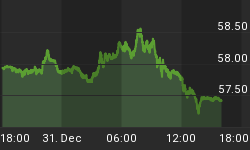Last analysis of US Oil on 17th December, 2013 expected more upwards movement towards a target at 103.21 to 104.42. Price moved higher as expected, but fell short of the target reaching only to 100.76.
The wave count remains the same.
The bigger picture sees US Oil in a large second wave correction at super cycle degree. Second waves can and often do correct to very deep degrees. They may correct up to 100% the length of the first wave.
Super cycle wave II looks to be unfolding as a zigzag. Within it cycle wave a subdivides as a five wave impulse so the correction cannot be over there. Cycle wave b may not move beyond the start of cycle wave a. This wave count is invalidated with movement above 146.73.
Cycle wave b is now a complete double zigzag structure, which is atypical in that the second zigzag did not make a new price extreme beyond the first. However, that is how it subdivides.
Cycle wave c cannot reach equality with cycle wave a as that would take price below zero. Cycle wave c is unlikely to be only 0.618 the length of cycle wave a because that would see it truncated. The best way to calculate a downwards target for this wave would be to use the primary degree waves within it. I cannot do that until primary wave 4 is over.
Cycle wave c is extremely likely to make a new low below 32.70 to avoid a truncation. Cycle wave c should last from one to several years. It may be either a simple impulse or an ending diagonal.
The bigger picture sees US Oil in a new downwards trend to last from one to several years. There is now a clear five wave structure downwards on the daily chart, and I have some confidence in a trend change at cycle degree.
Last analysis calculated a target for minor wave 2 to end and had the same parallel channel drawn about this upwards sloping zigzag. Although the target was not met (price fell 2.45 short) the parallel channel was very clearly breached by downwards movement. This provides channel confirmation that minor wave 2 is over and minor wave 3 should be underway.
Within the zigzag of minor wave 2 minute wave c is just 0.22 longer than 0.618 the length of minute wave a. Minute wave c ended mid way within the channel which is a common place for C waves to end.
I would expect to see an increase in downwards momentum over the next couple of weeks. At 80.28 minor wave 3 would reach equality in length with minor wave 1. If price continues to fall through this first target then the next target calculation is at 67.62 where minor wave 3 would reach 1.618 the length of minor wave 1.
Within minor wave 3 no second wave correction may move beyond the start of the first wave. This wave count is invalidated with movement above 100.76.
Because MACD has come up to touch the zero line it looks like a second wave correction is either most recently over or only halfway done. Although minute wave ii is shallow it could be over there. Sometimes within third waves corrections are more shallow and brief than normal.
Within minute wave i there are no adequate Fibonacci ratios between minuette waves (i), (iii) and (v).
Ratios within minuette wave (iii) are: subminuette wave iii has no Fibonacci ratio to subminuette wave i, and subminuette wave v is 0.18 longer than 0.382 the length of subminuette wave iii.
Ratios within subminuette wave iii are: there is no adequate Fibonacci ratio between micro waves 3 and 1, and micro wave 5 is just 0.01 longer than 0.146 the length of micro wave 3.
At 86.62 minute wave iii would reach equality in length with minute wave i.
The channel drawn about this downwards movement is an acceleration channel. Minute wave iii should breach the lower edge of this channel. Further corrections along the way down are most likely to find resistance at the upper edge of the channel.
Within minute wave iii no second wave correction may move beyond the start of the first wave. This wave count is invalidated with movement above 94.17.



















